In the circuit shown below, the switch is kept in position 'a' for a long time and is then thrown to position 'b'. The amplitude of the resulting oscillating current is given by
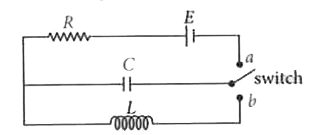
E√L/C
E/R
infinity
E√C/L
The correct Answer is:D
During connection of switch with point a for long time, capacitor gets fully charged.
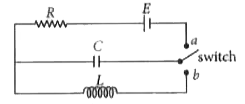
Charge on capacitor, q = CE.
Energy stored in capacitor, U=q22C
When switch is thrown to position b, there is an LC oscillating circuit.
Suppose amplitude of current in LC circuit is I0.
Using energy conservation principle,
Maximum electrical energy = Maximum magnetic energy
q22C=12LI20⇒C2E2C=LI20,∴I0=E√CL
Similar Questions
In the circuit shown, initially the switch is in position 1 for a long time. Then the switch is shifted to position 2 for a long time. Find the total heat produced in R2
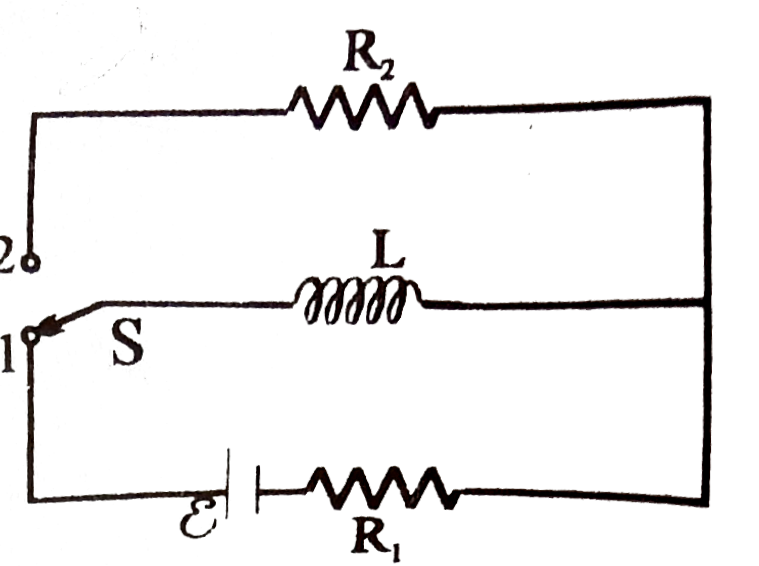
View SolutionIn the circuit shown below, the switch S is connected to position P for a long time so that the charge on the capacitor become q1μC. The S is switched to psition Q. After a long time, the charge on the capacitor is q2μC. The magnitude of q1 is
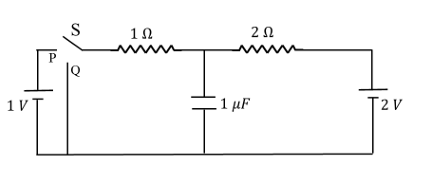
View Solution
Knowledge Check
In the circuit shown switch S is connected to position 2 for a long time and then joined to position 1. The total heat produced in resistance R1 is:
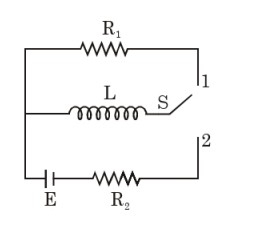 ALE22R22BLE22R21CLE22R1R2DLE2(R1+R2)22R21R22
ALE22R22BLE22R21CLE22R1R2DLE2(R1+R2)22R21R22In the circuit shown below, the switch is in position 1 for a long time. At some moment after that the switch is thrown in position 2. The quantity of heat generated in the resistance of 375 ohm after the switch is changes to position 2 is :
 A0.15 JB0.25 JC0.50 JD0.10 J
A0.15 JB0.25 JC0.50 JD0.10 JIn the circuit shown in the figure, the switch S is in position 1 for a long time. Now the switch is thrown to position 2. Find the total heat developed in the circuit till the steady state is reached again.
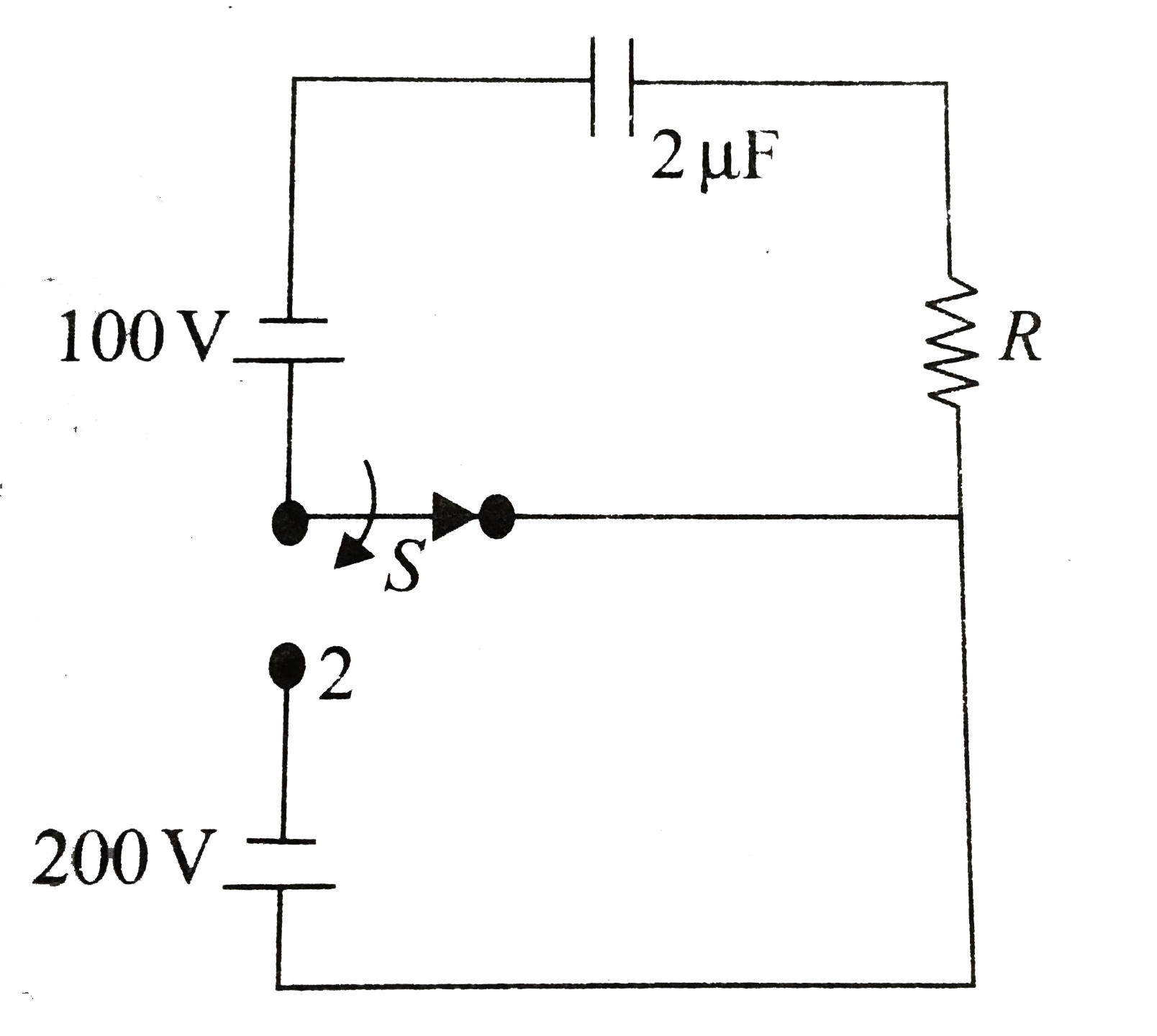 A0.04 JB0.4 JC0.02 JD0.2 J
A0.04 JB0.4 JC0.02 JD0.2 J
In the circuit shown below, the switch S is connected to position P for a long time so that the charge on the capacitor become q1μC. The S is switched to psition Q. After a long time, the charge on the capacitor is q2μC. The magnitude of q2 is

View SolutionIn the circuit shown in Fig. 12.3, when the switch is moved to ‘ON’ position
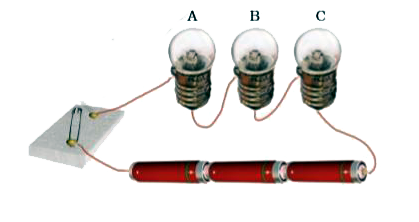
View SolutionIn the circuit shown, the switch has been in position 1 for a long time. Now the switch is shifted to position 2. If this instant is taken as t = 0, then at time t=π2
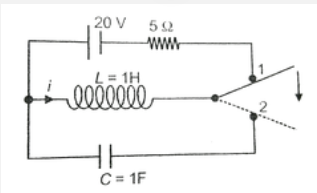
View SolutionIn the circuit shown in fig. the switch is kept closed in position 1 for a long time. At time t=0 the switch is moved to position 2. Write the dependence of voltage (VC) across the capacitor as a function of time (t). Take VC to be positive when plate a is positive.
Given: R1=20Ω,R2=60Ω,R3=400kΩ,V1=40V,V2=90VandC=0.5μF.
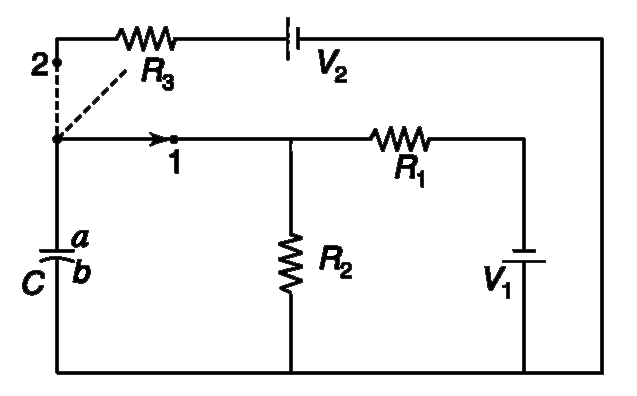
View SolutionIn the circuit as shown in figure the switch is closed at t=0.
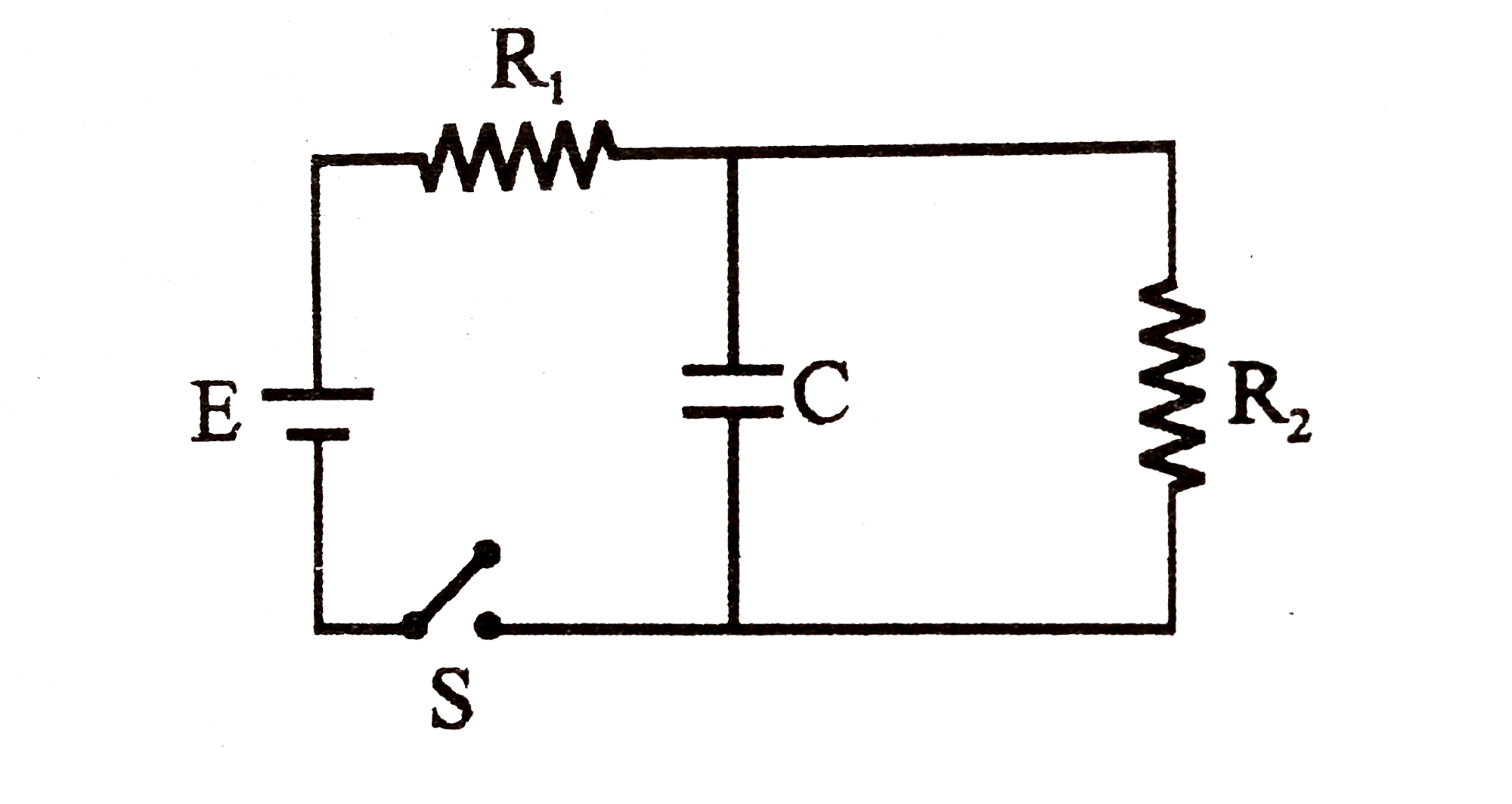
A long time after closing the switch
View Solution

